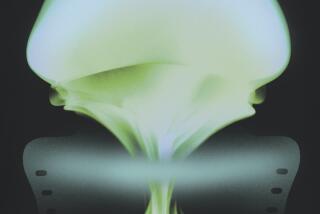Worst movie ever? ‘The Disaster Artist’ explores ‘The Room’
Many movies have been awarded the dubious honor of worst film of all time. There’s Ed Wood’s gloriously slapdash “Plan 9 from Outer Space” or the audaciously cheesetacular “Attack of the Killer Tomatoes.” But Greg Sestero and Tom Bissell make a strong case in their new book “The Disaster Artist: My Life Inside The Room, the Greatest Bad Movie Ever Made.”
“The Room,” released in 2003, never received widespread distribution, and its limited screenings were privately financed by the executive producer, Tommy Wiseau, who also served as writer, director and lead actor.
His $6-million brainchild is a tortured love triangle that ends with a suicide. Technically, that’s a spoiler, but one doesn’t watch “The Room” for the story; one watches for Wiseau’s mesmerizingly off-kilter performance as Johnny: a longhaired, English-mangling, Eastern-European banker who looks like, as the book puts it, “one of the anonymous, Uzi-lugging goons that appears for two seconds in a Jean-Claude Van Damme film before getting kicked off the catwalk.”
Nothing about the film makes sense. Motivations change on a whim. Subplots are ignored. There’s even a character who makes his first appearance two-thirds of the way through the movie, yet acts as if he’s been there the whole time. “The Room’s” awfulness is so jarring it’s as if the filmmakers were trying to create something that would make audiences go from suspending their disbelief to questioning their hold on reality, because no one could make a movie this terrible without realizing it, could they?
That’s the riddle at the heart of “The Disaster Artist.” Co-written by veteran journalist-essayist Tom Bissell and actor Greg Sestero, who played Johnny’s best friend, Mark, while somehow simultaneously serving as line producer, we learn every grim detail about how the movie was made.
The sphinx at the center is Wiseau. Where does he come from? What kind of accent does he have? Is “The Room” an elaborate money-laundering scheme?
According to Sestero, Wiseau arrived on set four hours late every day but insisted that all cast members be available for every scene. He spent a small fortune purchasing his own camera equipment, yet routinely skimped on basics like dinner for the crew. Whenever someone complained, he became even more unreasonable, initiating confrontations that resulted in mass mutinies. He went through three directors of photography. But he saved his most bizarre behavior for when the cameras were rolling.
Sestero recalls, “Tommy couldn’t remember his lines. He couldn’t hit his mark. He couldn’t say ‘Mark.’” What made Wiseau’s struggles with his lines so bizarre is that he wrote them. When he does rise to the occasion, his performance is histrionic. As he screams “You’re tearing me apart, Lisa!” you can almost hear Marlon Brando rolling over in his grave.
The book’s second story line explores Sestero’s complicated relationship with Wiseau, from the first time they met in a San Francisco acting class, through their awkward stint as roommates, up to the making of the film.
The story of their odd-couple friendship is both rich and peculiar but will resonate if you came to L.A. in pursuit of a dream and cast your lot with an oddball whose most redeeming quality was that you shared the same dream. Sestero uses Wiseau to get a foothold in Hollywood. Wiseau uses Sestero to get his movie made. Eventually, Sestero begins to suspect that Wiseau is a different kind of artist: a con artist.
“They let you believe that the things that don’t add up are what make them interesting or special. They let you believe that in those gaps are the things that hurt and wounded them. But maybe there’s nothing in those gaps. Nothing but your own stupid willingness to assume the best of someone,” he writes.
“The Disaster Artist” is not only the terrifically engaging tale of a bad Hollywood movie, it’s one of the most honest books about friendship I’ve read in years.
What the book doesn’t do, however, is crack the enigma that is Wiseau. Sestero explains, “When trying to express the parts of himself he seems to have lost access to, Tommy offers up fantastical, sad, self-contradictory stories.”
The legend, as they say, lives on. With “The Room” now a cult phenomenon in the so-bad-it’s-good category of unintentional comedy, “The Disaster Artist” will supply fans who pack screenings and perform raucous audience participation rituals with insight into their unlikely hero. And it fuels new fans like me with a curious desire to see the film, a desire so conflicted you could say it’s tearing me apart.
Ruland is the author of the short-story collection “Big Lonesome” and the host of the reading series Vermin on the Mount.
The Disaster Artist
My Life Inside The Room, the Greatest Bad Movie Ever Made
Greg Sestero and Tom Bissell
Simon & Schuster: 288 pp., $25.99
More to Read
Sign up for our Book Club newsletter
Get the latest news, events and more from the Los Angeles Times Book Club, and help us get L.A. reading and talking.
You may occasionally receive promotional content from the Los Angeles Times.






